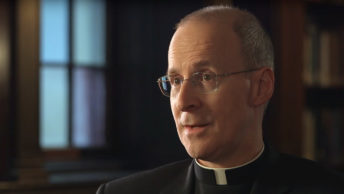The American left, led by President Barack Obama, his heir-apparent Hillary Clinton and union/Soros-financed radical social activists, has brought the nation to moral bankruptcy and dangerous racial unrest. If you think this statement is just right-wing hyperbole, think twice about the five Dallas policemen murdered in July by a disaffected African American during a Black Lives Matter protest. Abetted by sympathetic politicians, radical groups such as “Black Lives Matter,” MoveOn.org and other community (dis)organizers have mobilized across the country to protest against alleged police brutality. These demonstrations have often turned violent.
Convention Disrupters for ‘Justice’
At the July Republican National Convention in Cleveland, Soros Foundation-funded protesters came with a mission to disrupt the convention. The campaign began with an internet hoax produced by Brave New Films, a Soros Foundation-backed social media group. They placed on the internet a fake petition, supposedly produced by gun-rights extremists, calling for an open gun carry rule at the GOP convention. The mainstream media denounced this phony petition as another sign of the craziness of gun-rights activists.
Meanwhile, another Soros-financed group, MoveOn.org, proudly took responsibility for shutting down a Trump rally in Chicago earlier in March. This was followed by their announcement to organize a “National Doorstop Convention” to run parallel with the GOP convention. A few weeks before the convention, the Center for Popular Democracy, yet another Soros Foundation-backed group, called for “social justice” movements to organize in Cleveland during the Republican convention. The American Civil Liberties Union (ACLU), to which the Soros Foundation gave $1.7 million, won a lawsuit on behalf of anti-Trump protesters to expand the area of their protests in Cleveland.
In this article we want to discuss another legacy the American left and its union backers have conferred on us: public debt. This is a looming crisis of huge magnitude that threatens the American republic as much as any terrorist attack or urban riot.
From Philadelphia to Detroit
The Founding Fathers who drafted the U.S. Constitution understood that a healthy political order rested on a healthy economy and stable public finance.
They gathered in Philadelphia in 1787 because they feared that the liberty they had fought for in the War of Independence was threatened by social disorder, as seen in Shays’ Rebellion in Massachusetts, and financial disorder in the nation and in the states. The revolution had been won by the blood of patriots, as well as congressional and state funding of the war effort made possible by printing money and issuing bonds. George Washington’s army won on the battlefield, but the nation was left with huge debts.
A politically handicapped Congress created by the Articles of Confederation was unable to raise the revenues to pay off the national debt. This problem was further compounded by state debts. Only a few states, such as Virginia, had been able to pay off their state debt. Others stood on the edge of bankruptcy. One of the many accomplishments of the subsequently adopted U.S. Constitution was the power given to the young federal government to raise the funds necessary to pay the national debt.
Throughout the 19th century, the major source of national revenue was tariffs. Tariff rates became a bone of political contention from the outset. The Democratic Party, with its base in the agricultural South, opposed high tariffs, while their opponents, first the Whigs and then their successor party, the Republicans, stood for protective tariffs to promote American manufacturing. The federal government issued bonds to fund its short-term debt, but tariffs remained the consistent source of revenue. The federal budget remained generally balanced until the late 19th century. As progressives sought to enlarge the federal government, a new source of revenue was needed, and so progressives promoted a national income tax. It took a constitutional amendment in 1913 to permit a national income tax without running afoul of original constitutional requirements to apportion certain taxes among the states.
Politicians Kick the Can
The problem with any tax, whether indirect through a tariff or a direct income tax, is that people do not like paying taxes in any form. As national, state and local government activities grew in the 20th century, politicians discovered that public debt was one way of avoiding public wrath about high tax rates. Progressives on the federal level could expand entitlement programs such as Social Security and Medicare through public debt. Public debt also became a tempting method for states and city officials to expand government. Selling municipal and state bonds became a big business for Wall Street. State and local public officials jumped on the bandwagon. In addition, unrealistic promises were made to public employee unions for high retirement and health care benefits to be paid in the future, and not reflected in current budgets.
The chickens were already coming home to roost when the Great Recession of 2009 hit. Today the national debt stands at close to $21 trillion and many states and cities are headed toward bankruptcy. In 2013, Detroit filed for bankruptcy. Faced with a shrinking population beginning in the 1960s, aggravated by a racial riot in 1967, the city tried various means to make up for a decline in revenues from property taxes other than cutting its bloated public employee workforce or negotiating new contracts with its public sector unions. A utility tax was imposed in 1975 and a gaming tax in 1999. A failure to downsize its workforce was compounded by a borrowing spree by Detroit’s mayor Kwame Kilpatrick between 2001 and 2006. The crash was inevitable.
Faced with an $18 to $20 billion debt, Michigan Governor Rick Snyder stepped in and appointed emergency manager Kevyn Orr to save the city from the fiscal abyss. Orr skillfully negotiated with creditors, insurers, unions and pensions to solve the city’s financial crisis. Bankruptcy Judge Steven Rhodes confirmed a plan of adjustment for the city in November 2014, cutting about $7 billion that was due to affected parties.
We should see in Detroit a warning signal of things to come. Failing to perceive a future that does not work, Democrats such as Bernie Sanders and Hillary Clinton, as well as state and local progressives, press for more and more entitlement programs. Meanwhile, Americans face a pension crisis that is going to get worse.
The Scary Pension Numbers
The total entitlement problem is immense. Pensions are only part of the general entitlement crisis facing the nation. The pension calamity can be put into simple and scary numbers: Federal, state and local governments face a $7 trillion shortfall in funding coming pension payments. Unfunded liabilities of various federal employee pension systems—both civilian and military— amount to $3.5 trillion. This is 20 percent of the U.S. gross domestic product (GDP). In addition, unfunded state and local government pension plan liabilities bring the total shortfall to 40 percent of the GDP in 2016. On the federal level the Social Security gap is estimated at $13.4 trillion. Medicare presents even a larger problem. Private corporations that have sponsored large pension plans face similar shortfalls, leading many corporations and businesses to move away from pension plans by hiring consultants or part-time workers.
The federal government’s pension problem in some ways is less severe because it can print money and issue more bonds, delaying the day of reckoning that Detroit faced. States and local municipal governments do not have the luxury of printing money. They can try selling more bonds, but if they cannot make the interest payments on the bonds already issued, they will have a hard time selling new bonds, no matter high the interest rate offered.
States and cities face immediate problems with unfunded liabilities. The Pew Charitable Trust reports that states are short today $968 billion in their pension systems, an astronomical increase of $54 billion over the year before. When debt from local programs is taken into account, the total shortfall tops $1 trillion. Three states stand out as facing the most immediate problems: Illinois, Kentucky and Connecticut. Illinois is more than $100 billion in the hole. These states—and many others—face a problem because their retirement funds are held in stocks and returns of these investments have fallen after the Great Recession.
States Skipping Required Contributions
Matters have worsened in states such as Illinois because state legislatures have failed to make the required contributions to their pension plans. The result is that in states such as Illinois, state legislatures have employees making their contributions, collected in their paychecks, while legislators have not matched these contributions with state funds. The moral turpitude of these legislators is outrageous. To win elections, they keep spending the taxpayers’ money on programs, while leaving their own employees to worry about their own future.
Illinois is not the only state where politicians are playing with their citizens’ future. New Jersey made only 47 percent of its required annual contribution in 2013, which was higher than the 39 percent in 2011 and 32 percent in 2012. The result was that by the end of 2015, New Jersey was $51 billion in the hole, with only 63 percent of its pension plan funded. Things are no better in some other states. Twenty-six other states did not set aside their required contributions to their public employee pension plans. The five states with the worst shortfalls are these: Illinois: 39 percent funded; Kentucky: 44 percent funded; Connecticut: 48 percent funded; Alaska: 52 percent funded; New Hampshire: 57 percent funded. The best-funded pension programs are in these states: Wisconsin and South Dakota: 100 percent funded; North Carolina and Oregon: 96 percent funded; Tennessee: 94 percent funded.
Financial analysts differ on exact projections in other states, but there is grim agreement of an impending financial catastrophe in state funding.
Cities are facing their own meltdown.
What Caused This Mess?
The obvious answers to this question are threefold: An economic slowdown, an aging population, and dishonorable politicians more concerned about winning elections by buying votes than they are about the public interest. But the driving force in this liability crisis is public sector unions.
Manhattan Institute fellow Daniel DiSalvo in Government Against Itself: Public Union Power and Its Consequences (2015) details the destructive role that public sector unions have played in bringing states and cities to the cliffs of financial collapse. His initial investigation appeared in a National Affairs article in 2010. He begins his essay by recounting how New Jersey’s Governor Chris Christie faced a firestorm when he took on public unions in his state. Stepping into office, he discovered an $11 billion budget gap. The chief perpetrators of the state’s fiscal catastrophe were the unions representing the state’s 400,000 public employees.
Christie signed an executive order banning public unions from making political contributions—the same rules that applied to corporations under state law. He undertook a protracted battle against state teachers unions, which were seeking pay increases and free lifetime health care for all their members. In addition, he proposed a one-year wage freeze and a change in pension rules to limit future benefits and to require that teachers contribute a small fraction of their salaries to cover their health insurance.
Governors Risk Careers to Buck Unions
In response, the teachers unions spent $6 million drawn from members’ dues in a vicious anti-Christie campaign. The tough-acting Governor Christie won many of his reforms, but it was a bloody battle. Governor Scott Walker in Wisconsin, Governor John Kasich in Ohio, Governor Mitch Daniels in Indiana and his successor Mike Pence learned similar lessons: Take on the unions and put your political career at stake.
Public sector unions such as the National Education Association (NEA), the American Federation of Teachers (AFT), and the Service Employees International Union (SEIU) have more members than private sector unions. Yesterday’s profile of the burly union worker has been transformed into a college-educated, white collar employee protected by tenure and civil service. Public sector unions are a fairly new phenomenon. In the 1930s, Democrats such as Franklin Roosevelt publicly opposed collective bargaining with public sector employees for the astute reason that these unions could strike and paralyze government.
This all changed in the postwar period. In the mid-1960s and early 1970s, states and cities enacted a plethora of laws providing public employee unions with collective bargaining rights. These collective bargaining rights created a big incentive for public employees to join unions. As union membership grew, public sector unions gained more and more political clout in the Democratic Party.
It made for a cozy relationship for all the parties involved. Government employees under civil service and collective bargaining agreements were given contracts that guaranteed lifetime employment and made it nearly impossible for them to be fired. DiSalvo discovered that the average tenure for cops and firemen in the 1930s and 1940s was five years. Their retirement and health care benefits soared. Moreover, through political mobilization, unions were able to elect the management responsible for negotiating labor contracts. Democratic politicians found a ready source for campaign contributions and manpower to tap in their campaigns. Progressive Democrats learned that they could expand government services with the support of progressive unions. SEIU became a major lobbying force in pushing ObamaCare through Congress in 2009.
Shortsighted Social Justice
Public service and teachers’ unions have become the backbone of the Democratic Party on every level. Public sector unions are major financial donors to the party. Moreover, public sector unions provide campaign workers for federal, state and local campaigns. They are adept at appealing to public concern for social justice. Who can argue against the idea of meritocratic civil service jobs protected from ring by machine politicians wishing to install their cronies in government positions? Who is not for better education for our children? Who does not want our “first responders”—cops on the street and firefighters—to be given better pay, health care and retirement benefits for putting their lives on the line?
Any proposed reforms to the system will face well-organized and skillful opposition from public sector unions that plays for sympathy from the public. Unfortunately the unions’ conception of social justice is shortsighted. Not only are we facing a financial crisis of immense magnitude, but money spent on exorbitant benefits takes away money that actually could be spent for better and more efficient education and public services. Soaring taxes and soaring government expenditures take money away from taxpayers who could start their own businesses or put money away for their own retirement.
Americans are confronting a world in chaos—attacks on police officers, racial discord, international terrorism and global disorder. Addressing any of these problems is going to become even more difficult as governments on the federal, state and local levels face financial catastrophe caused by venal politicians and self-serving unions. An awakened, virtuous public is the first step in heading off this silent crisis about to explode.








